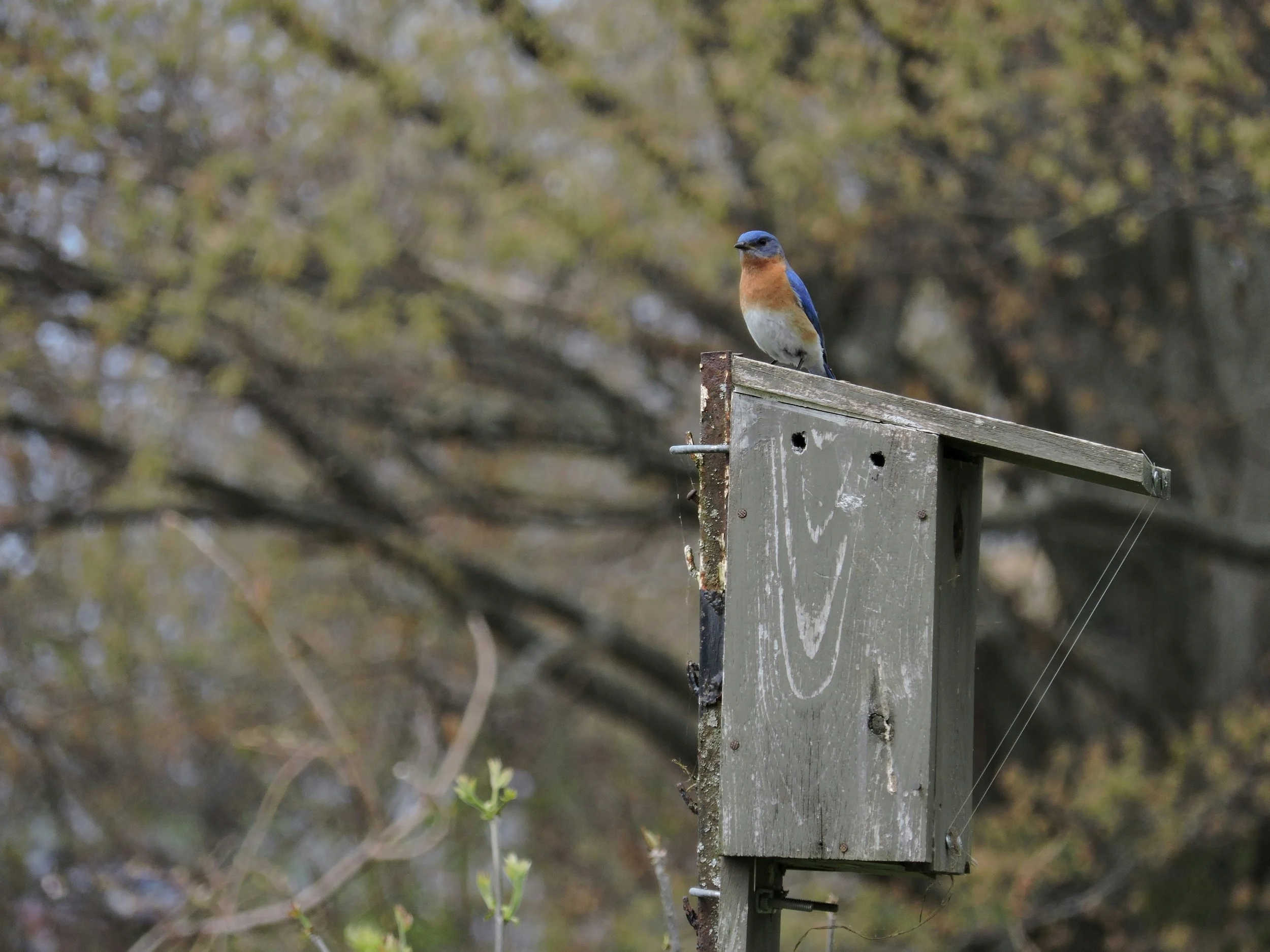
Eastern bluebird
Sialia sialis
Photo by Ken Thomas
Photo by Andrew C
Banner image by Sandysphotos.
The Beautiful Bluebird
Eastern bluebirds are a unique bird species. Their natural beauty is admired by many bird enthusiasts. The Eastern bluebird is small with a round, colorful body. Males are blue on the head, back, and wings. Males have a brown-orange chest and a white underside. Females are lighter in color with a gray to light blue head, back, and wings. Females have a light brown to tan chest and a white underside.
Eastern Bluebirds have a large habitat range of eastern North America, including central to eastern United States. The birds will migrate throughout this range, traveling south for the winter, and moving north for the warmer months. The species is also commonly found throughout Michigan. The Eastern Bluebird prefers to find a home in an open area, including grasslands, open fields, meadows. The birds will nest in pre-built tree cavities, since they can’t build their own. Their nests can often be found in cavities in trees, wooden fences, and birdhouses. Near their nests, the Eastern Bluebird likes to perch on wires and fence posts.
Unlike many bird species, the Eastern Bluebird will forage for food on the ground. Their diet can vary, but it mostly consists of insects, including caterpillars, beetles, worms, moths, grasshoppers, and spiders. During the winter, when insects can be difficult to find, the Eastern Bluebird will eat fruit and berries. There are many predators that prey on the species, including domestic cats, snakes, raccoons, chipmunks, and flying squirrels. The Eastern Bluebird also has to compete with other birds, such as House Sparrows and European Starlings, for habitat space.
Eastern Bluebirds produce a short, low-toned song. The song is often described as a squeaky warbling sound, with a distinct chatter pattern, sometimes paired with short whistles. Males will often perform the song during breeding season. Females will occasionally perform the song if predators are in the area. Eastern Bluebirds will also produce a light, low-frequency call that resembles a whistle. The birds produce these calls as a form of communication.
Ecosystem Services
Supporting our farmers: The Eastern Bluebird will often make a home on open farmland. Eastern Bluebirds eat many insects (such as beetles), which are often pests to farms. Therefore, the species helps keep healthy crops for farmers.
Seed Dispersal: Since the diet of Eastern Bluebirds includes fruits and berries, the birds help distribute seeds through their waste. Dispersing seeds helps plant biodiversity and promotes growth.
Providing a home for Eastern Bluebirds
The habitat of Eastern Bluebirds is scarce as a result of urbanization, tree removal, and species competition. The species often has to compete against other stronger species, such as European Starlings and House Sparrows, for nesting cavities. Therefore, creating more habitat opportunities for Eastern Bluebirds, such as nesting boxes, is critical for supporting the population of this species.
Creating a habitat: Eastern Bluebirds are easily attracted by birdhouses. However, it’s important to have a birdhouse that will attract Eastern Bluebirds, without also attracting competitors, like sparrows and starlings. Birdhouses made out of wood, with a small opening, and no perch will often attract Eastern Bluebirds if placed in an open area, such as a meadow or yard.
Supplying food: Although Eastern Bluebirds don’t eat seeds commonly found in bird seed mixes, including mealworms in a bird feeder will provide a food source for the species.
Providing water: Placing a bird bath in your yard can attract the species, while also providing a source of water for the birds.
Refrain from harmful chemicals: Avoid the use of pesticides in gardens and lawns, which can be harmful to all bird species.





